How to setup WordPress for SEO excellence
Whether you’re a small business just starting, or an established brand with thousands of customers, search engine optimization can help your company grow exponentially. SEO is the process by which websites are made more visible through an increase in traffic, hence ranking higher on SERPs (Search Engine Results Pages).
In this article, we dive into our best WordPress SEO tips at MRK WP and show you how to attain SEO excellence. With this guideline, you too can start increasing your site’s search engine rankings.
Table of Contents
- 1. Start with a good WordPress Theme
- 2. Use Gutenberg Blocks
- 3. Use Premium WordPress SEO Tools
- 4. Use Semrush for Keyword Research
- 5. Use Hemmingway and Grammarly
- 6. Make your article great with relevant images
- 7. Schedule and share your content through social media
- 8. Email your posts to your contact list
- Final Thoughts
1. Start with a good WordPress Theme
Your website’s niche or business category influences the type of WordPress theme you use. Whether it is an online store or a personal blog, you can choose from over 800 premium and free WordPress themes available.
At MRK WP, we use the Blocksy theme due to its simplicity, fast loading, and easy to configure features. In addition, we recommend using Blocksy, Astra, or Kadence as your starter themes. These themes are great to use because they are lightning-fast, Gutenberg compatible, and lightweight.
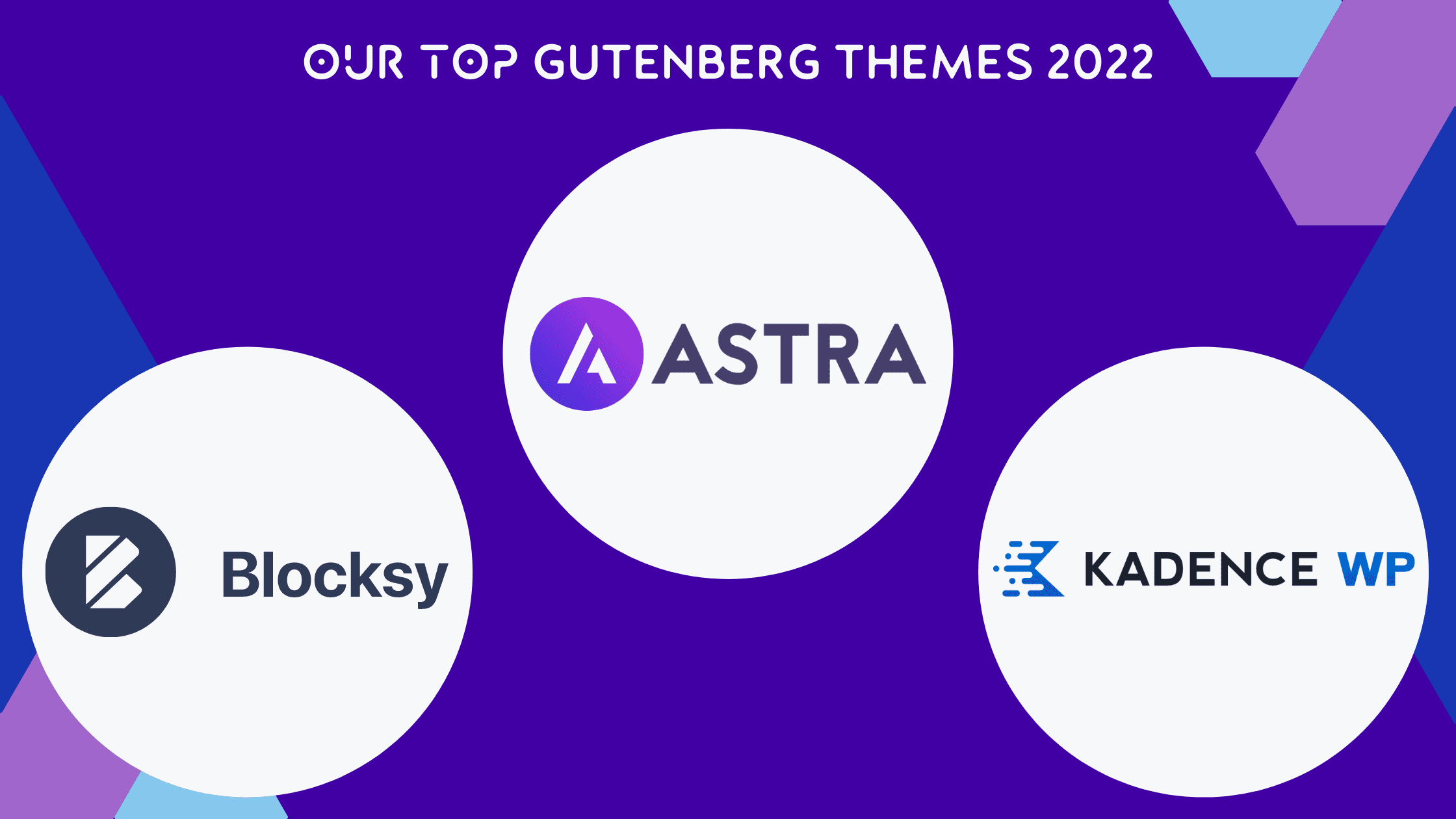
Guidelines for choosing a WordPress Theme:
- Choose a Gutenberg Theme
A Gutenberg theme is easy for non-developers to use and promotes a visual editing experience. - No jQuery
Select a theme that does not use jQuery as a core library requirement to function. This is because jQuery adds more overhead to your web pages. In turn, it will slow down your website. - Don’t use a Mega Theme
Mega themes come with heaps of shortcode and a custom builder. Themes like Flatsome and Divi depend on shortcode. This makes it hard for you to transfer your content if you ever want to change your theme. - The Website’s Purpose
This is the primary baseline for choosing a WordPress website theme. For example, if you are doing a drop-shipping site, you want to make sure your theme has good support for WooCommerce. - Customisable
Use themes that are easy to customise in areas that are important to your business. - Use Responsive Themes
We recommend choosing these due to their flexibility. They adjust the site’s layout on different device screens with ease. - Choose Lightweight Themes
These are fast and load quickly in the browser. - Developer Support
Use themes where good developer support is a guarantee.
As seen above, choosing the appropriate theme for your website is crucial since it impacts your site’s speed, design, and structured data.
2. Use Gutenberg Blocks
Gutenberg is an advanced block editor for WordPress. It’s also one of the most user-friendly content management tools available. Elementor and other page builders were often used for WordPress in the past. Unfortunately, this caused conflicts with other plugins, especially those related to SEO and Page Speed.
Why Gutenberg blocks for WordPress SEO?
Gutenberg was part of the WordPress 5.0 release. The Gutenberg content editor provides you with a collection of blocks to design a page. This makes advanced page design much more effortless. Besides, Gutenberg added drag-and-drop functionality for SEO, page building, and better design flexibility for visual elements. On top of that, it’s native to WordPress, which means you don’t need a plugin or other tools to use it.
It has support for SEO plugins
Gutenberg is compatible with WordPress SEO plugins like Yoast. The Yoast SEO plugin runs checks in real-time and makes suggestions for your content within the Gutenberg editor. Other page builders like Divi, Elementor, and Beaver Builder do not have this integration. This is a hindrance to writing and editing your SEO-based content.
It is easy to use
Gutenberg is an easy-to-use editor for non-technical users. You can easily use blocks to add visual elements to your content. These include; headings, tables, images, videos, paragraphs, and columns.
It simplifies website maintenance
Gutenberg is part of WordPress core. When you update WordPress, your page builder gets an update too. That’s one less plugin to manage.
3. Use Premium WordPress SEO Tools
The list of SEO tools to use for optimising your blog is endless. But, these two (Semrush and Yoast) are some of the best. Furthermore, as we will see below, you may use these tools interchangeably since each has its strength over the other.

Yoast WordPress Plugin
Yoast is a WordPress plugin that helps optimise your content for search rankings. It analyses your article and gives you a report on how SEO-friendly it is. With Yoast, you can set up your WordPress site to a level where it meets the highest technical SEO standards. Here is why:
- With Yoast, you can set the focus keyphrase for your content. This is the keyword you want your article to rank for on Google.
- Yoast also analyses your content and gives you feedback on how you can improve it for readability and SEO.
- Another perk of using Yoast for search engine optimisation is the tool’s integration with Gutenberg and Semrush.
- Yoast has a great Meta Descriptions editor and provides optimised XML sitemaps. These are important for getting the most from your Google Search Console reports. These can be set up in the webmaster tools area of the Yoast plugin.
- Yoast premium is a tool we use on our own website for internal linking suggestions. This is a great time saver and works best with Gutenberg Page Builder websites.
Related How to guide
Add your Yoast XML sitemap using the how to guide and video.
Semrush Integration with Yoast
Semrush is a premium software service that integrates with the free and premium versions of Yoast. It is a site health checker, traffic analytics, backlink checker, and SERP tracker.
To illustrate how the integration of Yoast and Semrush works. Suppose you’re writing a blog post and include a focus keyphrase from Yoast. Then, Semrush will list related key phrases to that focus keyphrase. This way, you won’t need to overstate your keyword within the article.
You can better understand how the Semrush integration works with Yoast in the video below from the Yoast team.
Other Yoast Premium Features
The Yoast Premium version comes with a lot more features to greatly improve your website’s SEO. Here are a couple of other notable features in Yoast.
Yoast SEO Analysis Feature
The content analysis in Yoast assesses crucial aspects of the posts and pages you create. Below is a screenshot overview of the Yoast SEO analysis results section found at the bottom of the page in WordPress.
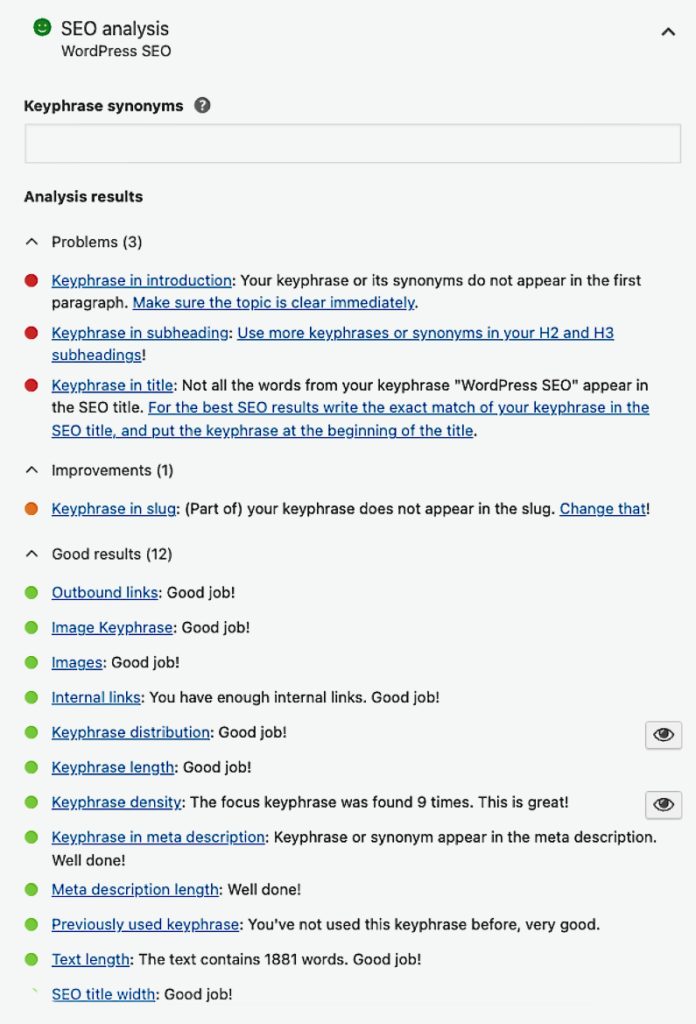
Yoast Social Preview Feature
Another great Yoast feature is the social preview element. It displays what your post will look like when shared on Facebook or Twitter.
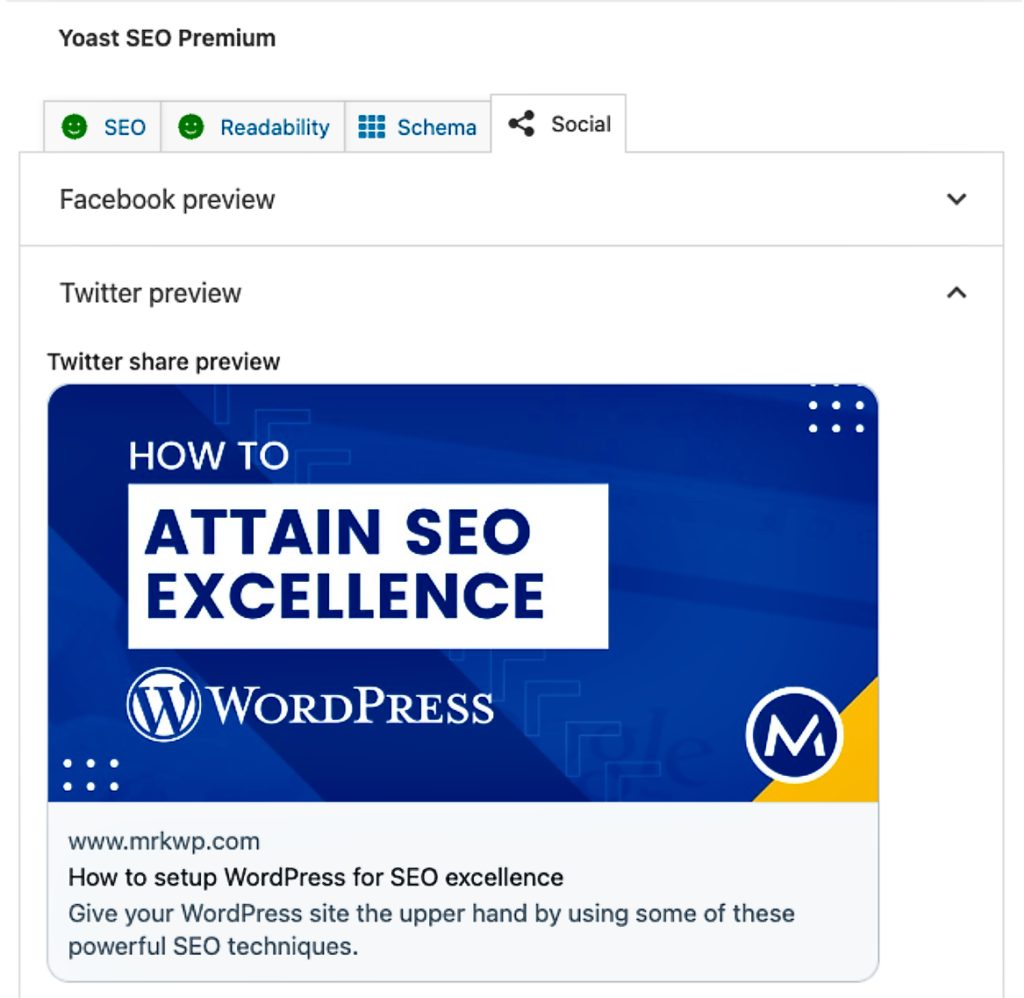
It also lets you see if the image you are using fits well. Remember, different social media platforms use different image dimensions.
4. Use Semrush for Keyword Research
Another versatile SEO tool is Semrush. It is most famous for its strength in keyword research and content marketing. This tool will assist you throughout different processes. These include; keyword research, keyword strategy tracking, and SEO auditing.
While setting out your WordPress SEO strategy, keyword research is the first thing you should consider. It is a crucial SEO ranking factor. Keywords are the words, phrases, or search queries that people use when looking for information on the internet.
Semrush also helps you identify your competitors’ keywords to know what to target with your WordPress blog post. It’s a great way to learn more about search engine optimisation and improve your WordPress site in the process!
In Gutenberg, you can write content while checking your content’s optimisation level with Semrush.
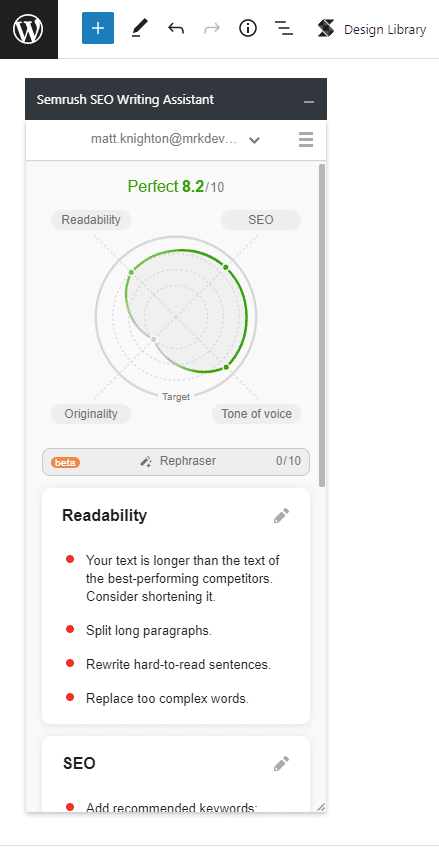
You can find the Semrush writing assistant in the Gutenberg editor at the bottom of your post. It will provide you with suggestions to improve your article’s SEO. These suggestions fall under different categories: Readability, SEO, Originality, and Tone of voice.
Note: Semrush only works with Gutenberg, and not all blocks are supported.
5. Use Hemmingway and Grammarly
There are some great editing tools to help when it comes to grammar. Hemingway and Grammarly are two we use at MRK.
Hemingway is an excellent tool for checking the readability of your text. It tags troublesome highlights and looks for passive voice, encouraging bold and clear writing. It also marks out simpler versions in purple and points out complex sentences in your content.
Grammarly is a powerful editing tool. It checks your grammar, highlights potential spelling mistakes and punctuation, and suggests corrections. Also, it points out potential issues in your text and makes context-specific suggestions.
Together, Hemingway and Grammarly make sure your blog posts are of the best quality before you hit publish.
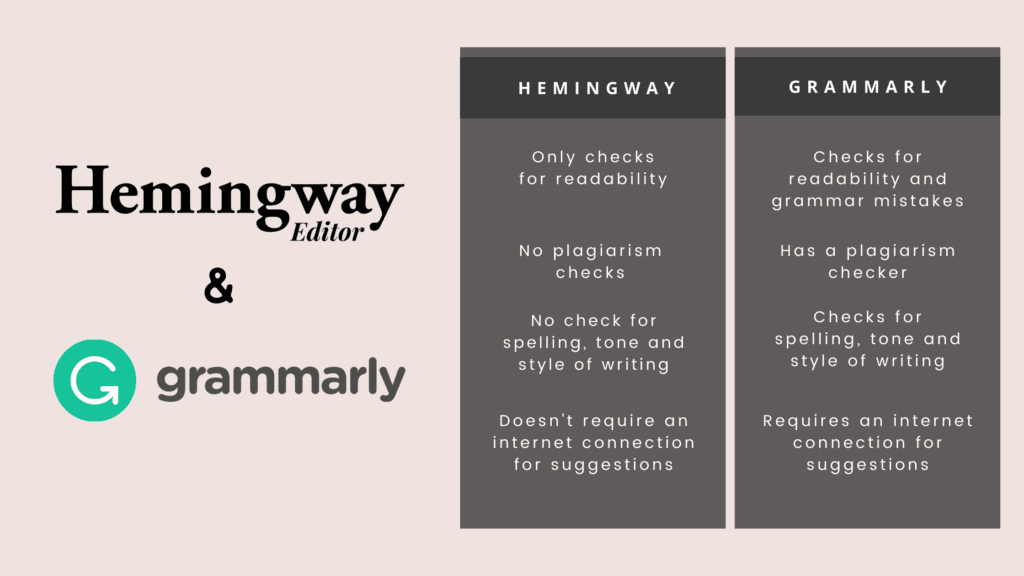
6. Make your article great with relevant images
High-quality content needs good images to improve its visual appeal. Not only that, but both your customers and Google loves excellent photos and will rank your content higher if you have them.
Using good quality images for your posts with relevant ‘alt text’ will go a long way toward improving SEO on your WordPress site.
We use Canva for image designs and so much more. Canva offers a wide range of templates and tools to make your images look great. You can also use their built-in design features to improve the quality of your pictures.
7. Schedule and share your content through social media
When it comes to SEO, social shares play a significant role in the success of your content. This is because Google and other search engines will look at your posts’ sharing activity as a sign of their popularity. This will, in turn, increase the chances of your website appearing at the top of Google search results.
You can also create multiple posts for one article. For example, if your blog post has four sections, you can design four Twitter posts- one for each section.
You can enlist the help of different tools to schedule social media posts. This will make sure your WordPress blog gets the attention it deserves.
As an authorised Zoho partner, we recommend using Zoho Social. This platform allows you to publish and schedule social media posts on different platforms like Twitter and LinkedIn. On top of scheduling, it will also provide insights into how well each post is performing.

Other Social media management tools include; Hootsuite, Buffer, or MeetEdgar to help you with this.
8. Email your posts to your contact list
Email marketing is still one of the most compelling and relevant ways to boost traffic to your website. By building a mailing list, you can create a relationship with your audience. You can achieve this by keeping them updated on your latest blog posts.
Final Thoughts
SEO is one of the most important things to do for your website if you want it to rank highly in Google’s search engine results. This is because search engines look at various factors contributing to how high up a given web page will show on their list. And these factors are what we know as “SEO best practices.”
Implementing some or all of these techniques can help improve your site’s ranking.
We hope that this article has given you some valuable insights into how you can optimise your WordPress site. If these tips have been helpful in any way, please share this post with others.








